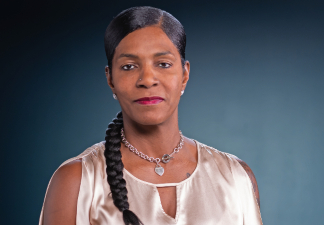 |
Wounded Warrior Project® (WWP) helps warriors live the life they deserve and thrive for a lifetime.
The WWP Warrior Survey provides insights into the current needs and challenges of warriors registered with WWP. It is the most comprehensive survey of post-9/11 wounded veterans.
The data found in the survey helps illuminate the health and wellness factors affecting warriors’ quality of life and offers actionable insights to drive meaningful change for the veteran community.
Download the most recent Warrior Survey report to learn more about the key findings.
Read the Executive Summary Read the Full Report
Quality of life is a key element of WWP’s vision to foster the most successful, well-adjusted generation of wounded service members in our nation’s history. To better understand what impacts warriors’ quality of life, we look across five main components:
- Mental wellness – Emotional and psychological health impacting one’s overall well-being, resilience, productivity, and drive.
- Physical wellness – Physical health affected by the habits and activities of the body.
- Financial wellness – Empowerment through well-managed economic resources.
- Social connection – Health, resilience, and camaraderie marked by meaningful relationships and experiences with individuals and a community.
- Spirituality – Well-being related to one’s unique purpose, identity, values, beliefs, and life vision.
“We are committed to turning these findings into action, working hand–in–hand with policymakers, veterans' organizations, and the American public to keep the promise to those who served."
WWP CEO Lt. Gen. (Ret.) Walt Piatt
A Connected Approach to Veteran Quality of Life
The latest Warrior Survey explored the ongoing needs of warriors as well as the factors most likely to protect or risk their quality of life. When talking about quality of life, we have to look at two things: what we need to eliminate and what warriors need more of.
“Thanks to the help I received from Wounded Warrior Project, I’m thriving today.
I’m taking care of myself – mind and body.”
Tonya Oxendine, WWP warrior
How the Survey Helps
Findings from the Warrior Survey help us understand warriors' challenges and advocate for changes to help them thrive for a lifetime. The Warrior Survey informs WWP's direct service programs and advocacy efforts, providing specific recommendations to help WWP and fellow veterans service organizations (VSO) better support warriors’ evolving needs.
Guided by the survey results, WWP identified the following recommendations to better serve warriors.

● Advance policies to improve access to mental health resources and reduce barriers to care.
Advance and promote accessible mental health care and address the shortage of mental health professionals.
● Enhance care and treatment for co-occurring conditions.
Provide whole-health solutions to enhance care and treatment for co-occurring conditions, addressing mental health, substance use, chronic pain, and sleep disorders through education, awareness, and innovative treatments.
● Enhance and expand suicide prevention training for both the veteran community and the public sector.
Support the veteran community through suicide prevention programs at state and federal levels, along with comprehensive training to equip communities to identify risks and act.
● Expand opportunities for veterans to connect within the veteran community and with the broader public.
Expand opportunities for veterans to connect by promoting civic engagement, volunteerism, and investing in peer support groups.
● Enhance financial wellness and employment opportunities for veterans.
Provide early financial management training and stronger employment resources for veterans to achieve stability and long-term success.
*Data from the Warrior Survey represents over 185,000 warriors who were registered with WWP as of March 2023.
“We’ve got to stay connected and do life together.”
Jake Norotsky, WWP warrior




